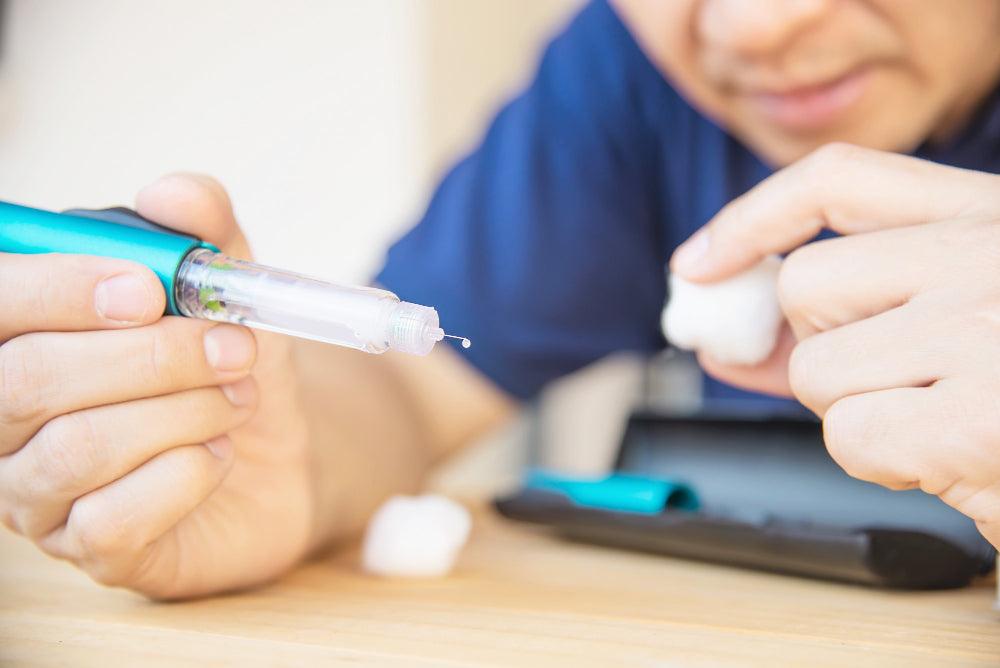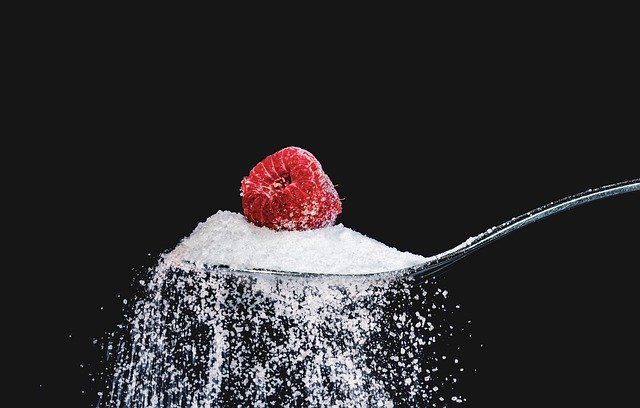Insulin Resistance: Signs, Symptoms and Causes


Insulin resistance is a metabolic disorder associated with impaired glucose tolerance, such as prediabetes and t2dm. Insulin resistance occurs when the body has been unable to adapt to the amount of insulin produced. The pancreas produces insulin, one of the organs in your body. It aids in preventing your body from absorbing an excessive amount of sugar (glucose). Glucose provides energy. However, an excessive amount of sugar is detrimental to your health.
The majority of the population is unaware that they also have insulin resistance unless they have a blood sample. Everybody occasionally has elevated blood sugar levels. When your blood glucose levels are regularly high, you may have increased thirst, increased urination, fatigue, vision problems, and sensation on the bottoms of your feet.
Obesity (abnormally high body mass index and abdominal fat), a sedentary lifestyle, and a carbohydrate-rich diet are the main factors of insulin resistance. While pregnant, certain women develop insulin resistance. Medical experts refer to this condition as gestational diabetes. There are several disorders where insulin resistance is in connection. Cardiovascular disease, non-alcoholic fatty liver disease, and polycystic ovarian syndrome are examples.
For various causes, your muscle, fat, and liver cells may respond incorrectly to insulin, preventing them from efficiently absorbing or storing glucose from your blood. It is referred to as insulin resistance. Consequently, your pancreas produces more insulin to counteract the rising blood sugar levels. The condition is named hyperinsulinemia.
Insulin resistance can occur in anyone, either temporarily or permanently. Chronic insulin resistance can progress to prediabetes and ultimately Type 2 diabetes over time if it is not treated or is not treatable.
Prediabetes is a condition in which your blood glucose levels are elevated but not high enough to be identified as diabetes. You can find prediabetes most frequently in individuals who already have some insulin resistance.
Diabetes type 2 (T2D), the most prevalent type of diabetes, can develop from prediabetes. T2D occurs when the pancreas produces insufficient insulin, or the body does not use insulin effectively (insulin resistance), resulting in elevated blood glucose levels.
Type 1 diabetes (T1D) occurs when the immune system of your body assaults and destroys insulin-producing cells in your pancreas for an unknown reason. T1D is an autoimmune and chronic condition, and individuals with T1D must inject synthetic insulin to maintain their health and well-being. While insulin resistance is not the cause of T1D, individuals with T1D may suffer degrees of insulin resistance. Their cells may not respond adequately to the insulin they inject.
Gestational diabetes is a kind of diabetes that occurs temporarily during pregnancy. It is caused by insulin resistance due to the hormones produced by the placenta.
Gestational diabetes resolves after delivery.
Healthcare providers frequently diagnose diabetes with a blood test called glycated haemoglobin (A1c). It displays your three-month average blood sugar level. Generally:
When people with Type 1 diabetes are diagnosed, they typically have very high A1C and blood glucose levels. These are due to their pancreas generating very little or no insulin.
Insulin resistance occurs when the cells of our body fat and muscles are refracting if the signal isn't sent by the hormone insulin. Glucose is referred to as blood sugar and is an energy-producing substance. We get glucose in grains, fruits, vegetables, milk products, and beverages that convert into carbohydrates. Having no insulin response can result in a blood glucose excess (high blood sugar). This can lead to prediabetes causing a recurrence of diabetes.
When insulin resistance occurs the pancreatic gland produces more insulin to help compensate. It'll work for a while so your glucose level will remain normal. However, you will eventually stop allowing the pancreas to work properly. Changing your diet and exercising habits can increase your risk of developing diabetes. When a patient has diabetes or is not capable of managing it, a blood test may reveal Type 2 diabetes.
Insulin resistance can occur in anyone. You do not have to have diabetes. It can be transitory (for example, taking steroid medication for a short period produces insulin resistance) or chronic. Excess body fat, particularly around the abdomen, and a lack of physical activity appear to be the two primary variables that contribute to insulin resistance.
Individuals with prediabetes and Type 2 diabetes frequently have some degree of insulin resistance. Insulin resistance can also occur in people with Type 1 diabetes.
There are no routine testing for insulin resistance and no symptoms until prediabetes or Type 2 diabetes develops. The best way to determine the prevalence of insulin resistance is to look at the number of prediabetes cases.
Insulin resistance often increases insulin synthesis (hyperinsulinemia) for your body to maintain normal blood sugar levels. Increased insulin levels can result in weight gain, which exacerbates insulin resistance.
Additionally, hyperinsulinemia is linked to the following conditions:
Insulin resistance is also an essential aspect of metabolic syndrome, a group of characteristics that relate excess abdominal obesity and insulin resistance to an increased risk of cardiovascular disease, stroke, and Type 2 diabetes.
If you have insulin resistance, yet your pancreas can increase insulin production to maintain normal blood sugar levels, you will have no symptoms.
However, insulin resistance can worsen with time, and the cells that produce insulin in your pancreas can wear out. Eventually, your pancreas will not generate enough insulin to overcome the resistance, resulting in increased blood sugar (hyperglycaemia) and associated symptoms.
Among the symptoms of high blood sugar are the following:
Many people, frequently for years, have no signs of prediabetes. Prediabetes is often imperceptible until it progresses to Type 2 diabetes. Specific individuals with prediabetes may exhibit the following symptoms:
If you experience these symptoms, you must consult a healthcare expert.

Insulin resistance and prediabetes can also predict diabetes. In the case of Insulin Resistance, there may also be a possibility of worsening the condition.
If your insulin-resistant body isn’t functioning properly, it can be a problem. Medications that help with type 2 diabetes are primarily prescribed to treat a chronic condition known as insulin resistance but there is limited evidence that these drugs control it. Metformin increases blood glucose tolerance by stimulating insulin and can be used in the therapy of diabetes and a variety of other prediabetics. 95%
Since eating is closely related to insulin and glucose numerous herbs and supplements are considered to be possible moderators of insulin sensitivity. It's not known whether supplements are beneficial for insulin-resistant individuals.
This includes many lifestyle and health benefits which are important. We cover more information on lifestyle changes here.

Scientists still have a great deal to learn about the specific mechanism through which insulin resistance develops. They have thus far discovered numerous genes that influence an individual's likelihood of developing insulin resistance. Additionally, elderly adults are predisposed to insulin resistance.
A variety of variables and circumstances can cause insulin resistance. Scientists believe that excess body fat, particularly around the abdomen, and physical inactivity are the two primary contributors to insulin resistance.
Physicians often perform blood tests to check for diabetes but do not always check for insulin resistance. Most reliable tests are complex and mostly used for scientific purposes. Doctors typically use fast blood glucose or A1C tests when diagnosing prediabetes. Less common, medical professionals use oral glucose tolerance tests (OGTS), much cheaper and not easy to administer. The A1C test shows your daily glucose levels. Both the OGTT and FPG measure your blood glucose levels when the testing takes place. A1C tests are not quite as sensitive as those other tests are. It might not be pre-diabetic that OGTT can detect.
Insulin resistance has been shown in some cases to lead to a range of health risks, but its precise causes are still unknown. The prevalence was highest in African and Latino populations. A hereditary predisposition and age increase may be associated with insulin resistance. Other underlying causes of heart failure include diabetes onset and history of pregnancy-associated diabetes. 3. The correlation between insulin resistance and risk factors is complex because it exacerbates and is further exacerbated by each other.
Insulin resistance has been shown in some cases to lead to a range of health risks, but its precise causes are still unknown. The prevalence was highest in African and Latino populations. A hereditary predisposition and age increase may be associated with insulin resistance. Other underlying causes of heart failure include diabetes onset and history of pregnancy-associated diabetes. 3. The correlation between insulin resistance and risk factors is complex because it exacerbates and is further exacerbated by each other.
During a period of insulin resistance, the body produces insulin to counteract that. Over months and years, a pancreatic beta cell that makes insulin becomes worn out and cannot cope with the increased need to produce insulin. After years of insulin resistance a few years after it becomes silent your blood glucose might be increasing and you might develop prediabetes. You may be suffering from a non-alcoholic fatty liver disease which causes an increased risk in people of liver disease and heart attacks.
Generally, diabetes has no inflammatory effects. Occasionally people with pre-diabetes may have darkened skin around arms and legs called "Acanthoposis nigricains". Many smaller skin growths called skin tags are common. Even though blood glucose does not cause the symptoms in many patients, several studies indicate that people suffering from prediabetes may already have early changes to their eyes that may cause retinopathies. It occurs mainly in patients who suffer from diabetes.
Physical activities can help with insulin response by reducing body fat or increasing blood glucose levels. In some cases, it can be helpful in preventing or delaying type 2 diabetes by reducing the amount of food consumed. National Institutes of Health-funded research project on diabetes prevention programmes found people losing up to 7 per cent of their body mass reduced their risk of developing diabetes. 3. These weigh between 10 and 14 lbs.
The United States currently has more than 80 million people with type 2 diabetes in the US. 80% of diabetes sufferers also have NAFLD9. However, insulin resistance poses many other problems. People with Type 2 diabetes, insulin resistance, and prediabetes are at risk of heart failure because of a high glucose levels.
Final thoughts
Your objective should be to achieve a comprehensive eating pattern that you can maintain over time while still including things you enjoy. Numerous practical applications exist to assist in tracking one's food and nutrient levels. If you require additional assistance with dietary adjustments, speak with a Nutritionist for specific meal plan advice and ideas.
To see our at-home Pre-Diabetes Test, click here.
To learn more about diabetes, see our information page here.
For a full range of blood tests and medications, visit our Welzo Online Pharmacy Page. For more details, click here.
References:
https://my.clevelandclinic.org/health/diseases/22206-insulin-resistance










Plus get the inside scoop on our latest content and updates in our monthly newsletter.